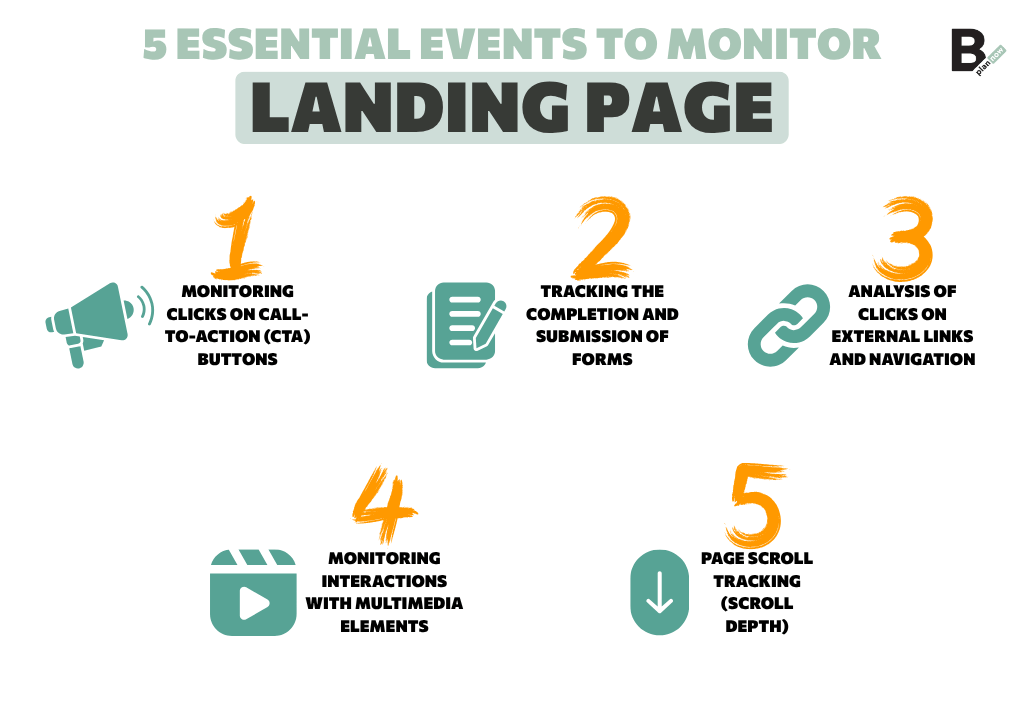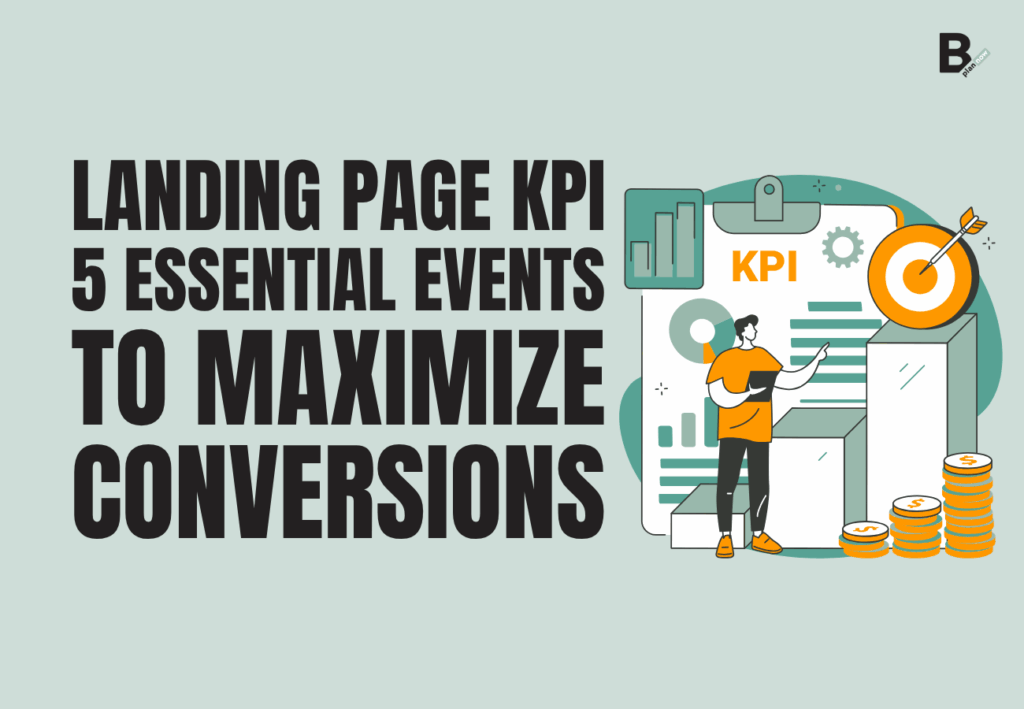Monitoring landing page kpi allows you to increase your conversion rate with targeted data-driven strategies.
To achieve this goal, you must necessarily track and analyze some very specific events, making use of advanced tracking tools. What are they? You’ll find out in this guide.
The Importance of Tracking in Landing Pages
Before you find out what marketing kpi and events to track in the landing page arena, it is crucial that you understand why it is so important to monitor so-called “landing pages.”
Mark down on a piece of paper Peter Drucker‘s words:
“What gets measured gets managed.”
Monitoring kpi allows you to continuously improve the effectiveness of your landing pages and optimize them to maximize conversions. In more practical and specific terms, this particular operation allows you to improve the user experience, analyze consumer preferences and make marketing campaigns more accurate and effective, as well as detect errors and correct them in a timely manner.

Event 1: Monitoring Clicks on Call-to-Action (CTA) Buttons
The first key element to consider is Call-to-Action buttons. You need to think of these particular buttons as the heart of your landing pages because they are what guide the user to take a specific action, whether it is simply filling out a form or actually purchasing a product or service.
Monitoring clicks on CTA buttons serves you well in evaluating the effectiveness of your chosen landing page design, as well as the copy (the text) and placement of the buttons themselves.
Analysis of the importance of tracking clicks on CTA buttons
In more specific terms, tracking clicks on Call-to-Action buttons helps you understand whether your intended message is compelling and whether the design is likely to attract users’ attention. A low click-through rate, for example, could mean that the text is not persuasive enough or that you have positioned the button incorrectly within the “landing page.”
How to implement tracking
To track clicks on CTA buttons you can ask Google for help. There are two data analysis tools in particular to implement tracking: Google Analytics and Google Tag Manager.
All you need to do is set up a custom event that logs every interaction with the button. Pay attention, however, to one crucial aspect: in order to identify the most effective combination of design and text, you necessarily have to test different solutions.
Event 2: Tracking the completion and submission of forms
Another very important element of landing page tracking is forms, which, often, are the real point of contact between users and the company. Tracking how forms are filled out and submitted allows you to identify any problems that may arise in this process and make the right improvements.
Understand completion rates and identify abandonment points
Only by analyzing the data can you be able to find out if users abandon the form in the middle of completion and, more importantly, when and why they do so.
For example, by tracking form completion and submission, you may find that users abandon the page when filling out the “phone number” item. In this case, you have three paths you can take: you might decide to remove this item, you might make it optional, or you might include a note explaining why it is important for users to fill in this field. We will return to this topic when we discuss some practical examples of success.
Event 3: Analysis of clicks on external and navigational links
The third event is the analysis of clicks on external and navigational links. These links are able to influence user behavior within landing pages, and as a result, tracking clicks on them helps you understand how users interact with the content on the page and whether they may be distracted from the main objective.
How visitors interact with external or internal links
Analyzing clicks on links within the landing page may reveal that many users are wont to click on an external link and leave the page before completing the conversion. At that point, it is up to you to assess whether or not you should remove that link or keep it (perhaps opening the link in a new tab), based on its importance to your end goal.
Optimize link structure and keep the user focused on conversion
The optimal strategy for improving landing page effectiveness is to reduce the number of nonessential links, ensuring that the ones you decide to keep on the page are truly relevant. To find out which links to keep you can use tools such as Heatmaps, which show you where users click the most.
Event 4: Monitor interactions with multimedia elements
Images, videos, and other multimedia elements within landing pages can increase engagement, but it is critical to make sure they are actually being used by users. The risk, in fact, is that instead of representing added value for conversion purposes, they only distract the user. This is precisely why you need to keep track of these elements.
Event 5: Page Scroll Tracking (Scroll Depth)
Page scroll tracking (also known as Scroll Depth) reveals to you how much users scroll through your landing page before abandoning it. This data specifically helps you better position Call-to-Action and key content in the most visible areas of the page.
For example, if most users abandon the landing page after seeing half of its content, it might be a good idea to move the CTA higher up.
The Importance of Tracking for Startups
For startups, even more than for “classic” companies, every click and every interaction counts. Monitoring landing page KPIs is the right move, then, to optimize (usually limited) resources and maximize results.
How startups can benefit from monitoring landing pages to optimize marketing strategies
Startups can use the data acquired through landing page monitoring to quickly test different variations of a “landing page” (this is known as A/B testing) and identify, in this way, which combinations and strategies are most effective.
You may be surprised to learn that, for example, you may find that a CTA in green is able to convert better than a red button.
Successful examples
Having reached this point, it is useful to resort to some practical examples to understand even better how and why to monitor landing page KPIs.
A classic example, in this regard, is that of a SaaS startup that, thanks precisely to tracking, found that 70 percent of users abandoned the registration form present within the landing page as soon as they got to the field to be filled in called “Phone Number.” By removing that item, the conversion rate increased by 25 percent.
Conclusion
As you must have realized by now, monitoring landing page KPIs is an essential task not only for large companies. Rather, it is an essential tool for anyone who wants to improve their conversions and has specific benefits for startups as well.
Start tracking the five key events we’ve unveiled in this guide today and turn your data into concrete actions. If you have questions or experiences to share, leave a comment below!
Do you want to read all the articles related to the stage your startup is in?


